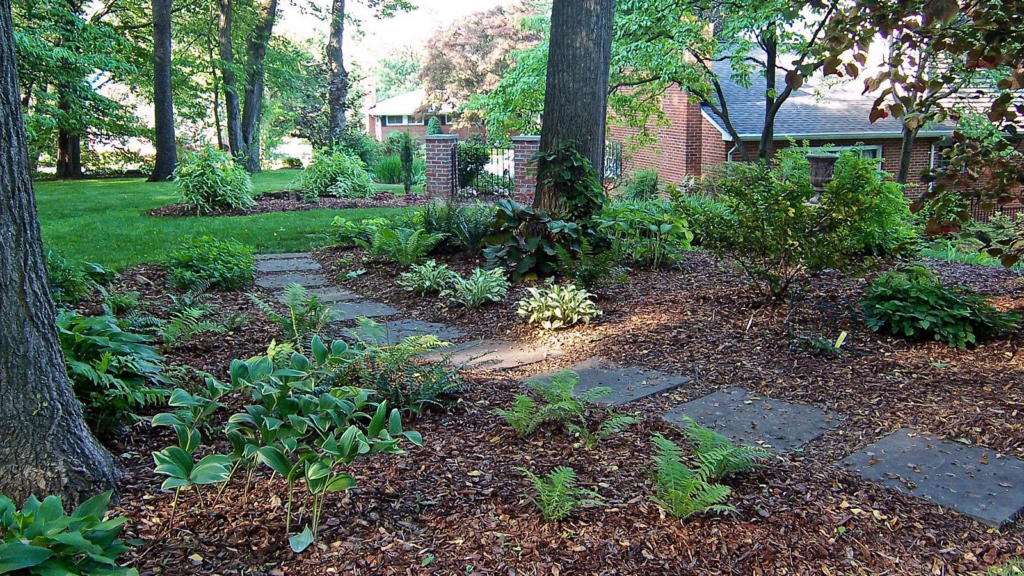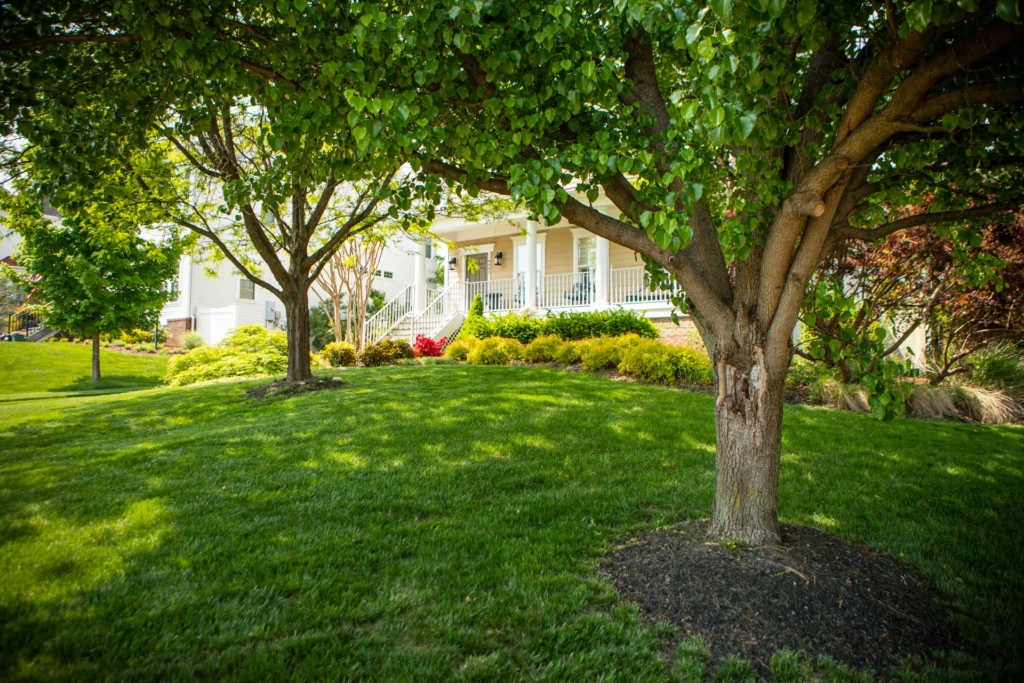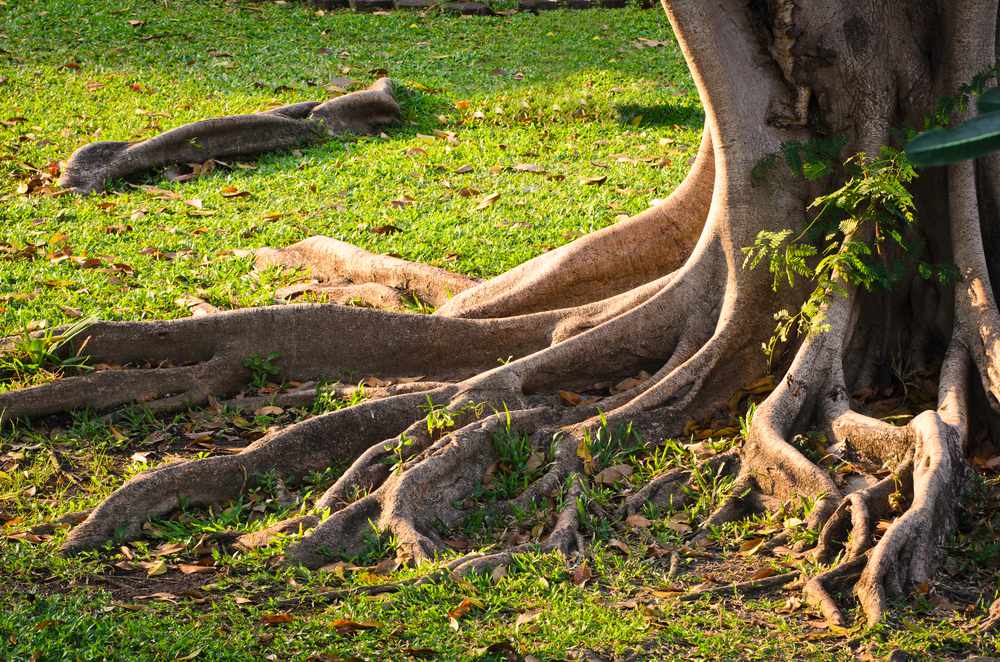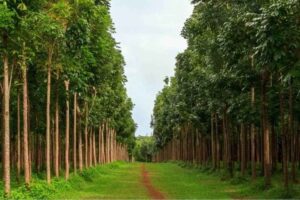Grass Won’t Grow Under Your Trees? Try These Culinary Herbs Instead
Are you fighting a losing battle trying to grow grass under your trees? You’re not alone. Many homeowners across the US struggle with patchy, thin grass in shaded areas beneath trees. The good news? This challenging space can become your secret garden of culinary herbs, transforming a problem area into a productive, beautiful, and useful part of your landscape.
Why Grass Struggles Under Trees
Before diving into herb solutions, let’s understand why grass fails to thrive under trees:
- Shade competition: Trees filter out 60-90% of sunlight, depriving grass of essential energy.
- Root competition: Tree roots absorb water and nutrients aggressively, leaving little for grass.
- Soil conditions: Fallen leaves and tree debris can create acidic soil conditions unfavorable to most grasses.
- Water interception: Tree canopies prevent rainfall from reaching the ground uniformly.
According to the USDA Forest Service, “The environment beneath trees creates unique growing conditions that many common lawn grasses aren’t adapted to survive in.” Source: USDA Forest Service Urban Tree Benefits
Culinary Herbs That Thrive Under Trees
Instead of fighting nature, work with it by choosing herbs specifically adapted to undercanopy environments. Many culinary herbs that originated in forest environments naturally grow as understory plants and actually prefer these conditions.
Shade-Tolerant Culinary Herbs for Tree Understories
Here are excellent choices for herbs that will grow under your trees:
1. Mint Family (Partial to Full Shade)
- Peppermint: Refreshing, versatile, and extremely adaptable to shade
- Spearmint: Slightly sweeter than peppermint, excellent for teas and desserts
- Lemon Balm: Citrusy flavor that brightens dishes and teas
- Oregano: Some varieties tolerate considerable shade
2. Woodland Natives (Moderate to Deep Shade)
- Wild Ginger: Offers subtle spicy notes to dishes
- Sweet Woodruff: Vanilla-like flavor, perfect for desserts
- Sweet Cicely: Anise-flavored leaves and seeds
3. Asian Herbs (Dappled to Full Shade)
- Shiso/Perilla: Essential in Japanese and Korean cuisine
- Wasabi: Genuine wasabi can be grown in cool, moist shade
- Mitsuba (Japanese Parsley): Celery-like flavor for soups and salads
Creating Your Under-Tree Herb Garden
Converting the barren area under your trees into a thriving herb garden requires some preparation:

Step 1: Evaluate Your Site Conditions
Before planting anything, analyze these factors:
- Shade level: Is it dappled, partial, or deep shade?
- Soil moisture: Is the area constantly dry due to tree roots?
- Soil pH: Most herbs prefer slightly acidic to neutral soils (pH 6.0-7.0)
- Root competition: How dense are the tree roots near the surface?
The National Gardening Association recommends testing your soil to understand what amendments might be needed. You can obtain soil testing kits through your local Extension Office. Source: USDA Cooperative Extension Service
Step 2: Prepare the Area
To give your herbs the best chance of success:
- Clear the area: Remove any struggling grass, weeds, and excessive tree debris.
- Create planting pockets: Rather than disturbing the entire root zone, dig individual planting holes.
- Add quality soil: Mix in compost and aged manure to improve soil structure and nutrition.
- Consider raised beds: For severe root competition, consider raised beds with at least 8-12 inches of soil.
Step 3: Select and Plant Your Herbs
Choose herbs based on your specific conditions. Here’s a comprehensive table of culinary herbs and their shade tolerance levels:
| Herb | Shade Tolerance | Water Needs | Soil Preference | Culinary Uses | Companion Benefits |
|---|---|---|---|---|---|
| Mint | High | Medium-High | Moist, rich | Teas, desserts, Mediterranean dishes | Repels pests, attracts beneficial insects |
| Lemon Balm | High | Medium | Adaptable | Teas, fish dishes, desserts | Attracts pollinators, calming aromatherapy |
| Sweet Woodruff | Very High | Medium | Moist, rich | German May wine, desserts | Beautiful groundcover, pleasant aroma |
| Chervil | High | Medium | Moist, rich | French cuisine, soups, salads | Early spring harvest, delicate flavor |
| Cilantro | Moderate | Medium | Well-drained | Mexican, Asian cuisines | Bolt-resistant in shade |
| Parsley | Moderate | Medium | Rich, moist | Universal garnish, soups, tabbouleh | Attracts beneficial insects |
| Sorrel | High | Medium-High | Rich, slightly acidic | Soups, salads, sauces | Perennial, early spring harvest |
| Thyme (creeping) | Moderate | Low | Well-drained | Mediterranean dishes, meat rubs | Fragrant groundcover, stepping plant |
| Wild Ginger | Very High | Medium | Rich woodland soil | Asian cuisines, desserts | Native plant, beneficial for wildlife |
| Shiso/Perilla | High | Medium | Rich, moist | Japanese, Korean dishes | Striking purple varieties available |
Step 4: Maintenance Techniques
Under-tree herb gardens require specific maintenance:
- Watering: Monitor moisture levels carefully—tree canopies can block rainfall
- Mulching: Apply 2-3 inches of mulch to retain moisture and suppress weeds
- Fertilizing: Apply balanced organic fertilizer in spring, as tree roots will compete for nutrients
- Pruning: Regular harvesting prevents herbs from becoming leggy in lower light
- Thinning: Some herbs like mint can become invasive—contain them with barriers

Seasonal Care for Under-Tree Herb Gardens
Your under-tree herb garden will change with the seasons, requiring different approaches throughout the year.
Spring Care
As trees leaf out and shade increases:
- Begin more frequent watering as tree roots become active
- Divide and replant spreading herbs like mint before they become too crowded
- Apply compost as a top dressing to replenish nutrients
Summer Management
During the hottest months:
- Increase watering during dry periods
- Harvest herbs regularly to encourage bushier growth
- Watch for signs of stress from root competition
Fall Preparation
As trees shed leaves:
- Decide which herbs to protect for winter and which to replace next season
- Add fallen leaves as mulch for perennial herbs (after shredding)
- Take cuttings from tender perennials to overwinter indoors
Winter Protection
For year-round herb production:
- Apply extra mulch around perennial herbs for root protection
- Consider simple cold frames for extending the season
- Let some herbs go dormant naturally—many will return in spring
Using Your Tree Understory Herbs in the Kitchen
The herbs from your under-tree garden often have unique characteristics compared to their full-sun counterparts:
Flavor Profiles of Shade-Grown Herbs
Shade-grown herbs frequently develop:
- More delicate, nuanced flavors
- Larger, thinner leaves
- Higher chlorophyll content (often deeper green color)
- Sometimes longer harvest periods
Preservation Methods
To enjoy your herbs year-round:
1. Drying
- Air-dry by hanging bundles in a well-ventilated area
- Oven-dry at very low temperatures (under 180°F)
- Dehydrate in a food dehydrator
2. Freezing
- Ice cube method: Chop herbs, place in ice cube trays with water or oil
- Pesto base: Blend herbs with oil and freeze in small containers
- Compound butter: Mix herbs with butter, form into logs, and freeze
3. Infusions
- Herb-infused vinegars
- Infused oils (use dried herbs to prevent spoilage)
- Herbal syrups for cocktails and desserts
Economic Benefits of Under-Tree Herb Gardens
Converting unproductive areas into herb gardens can be financially rewarding:
- Reduced landscaping costs: Less money spent on grass seed, fertilizers, and water
- Lower grocery bills: Fresh herbs can be expensive at stores ($2-5 per small bunch)
- Specialty herb potential: Some shade-tolerant herbs command premium prices at farmers’ markets
- Value-added products: Dried herb blends, teas, and infused products can be sold locally
The USDA’s Alternative Farming Systems Information Center notes that specialty herb production represents a significant opportunity for small-scale growers, with demand for locally-grown culinary herbs continuing to rise. Source: USDA Alternative Farming Systems Information Center

Common Challenges and Solutions
Even the best-planned under-tree herb gardens face challenges:
Challenge 1: Extreme Root Competition
Solutions:
- Use containers or fabric pots placed on the soil surface
- Create raised beds with root barriers at the bottom
- Focus on shallow-rooted herbs like thyme and oregano
Challenge 2: Dry Soil Conditions
Solutions:
- Install drip irrigation to provide consistent moisture
- Apply water-retaining mulch like leaf mold or compost
- Choose drought-tolerant herbs like rosemary and sage for dry areas
Challenge 3: Excessive Shade
Solutions:
- Consider selective pruning of lower tree branches to increase light
- Place the most shade-tolerant herbs in the deepest shade
- Use reflective mulch to maximize available light
Challenge 4: Pest Issues
Solutions:
- Interplant herbs with pest-repelling companions
- Maintain good air circulation to prevent fungal issues
- Attract beneficial insects with small flowering herbs
Conclusion: Creating a Productive Ecosystem
Instead of viewing the area under trees as a problem spot where grass won’t grow, embrace it as an opportunity to create a productive, low-maintenance herb garden. Working with nature rather than against it allows you to transform this challenging space into one of the most valuable parts of your landscape.
By selecting the right culinary herbs adapted to understory conditions, you’ll not only solve a landscaping challenge but also enhance your cooking with fresh flavors year-round. The herbs will benefit from the protection of the tree canopy, while their aromatic qualities can help repel certain pests that might otherwise damage your trees.
Remember that creating a successful under-tree herb garden is an ongoing process of observation and adaptation. Each season will teach you more about your specific conditions and how different herbs respond to them.
For more detailed information on specific herbs and their growing requirements, visit the USDA Plant Database at https://plants.usda.gov, where you can search for native and adapted herb species suitable for your specific region and growing conditions.





